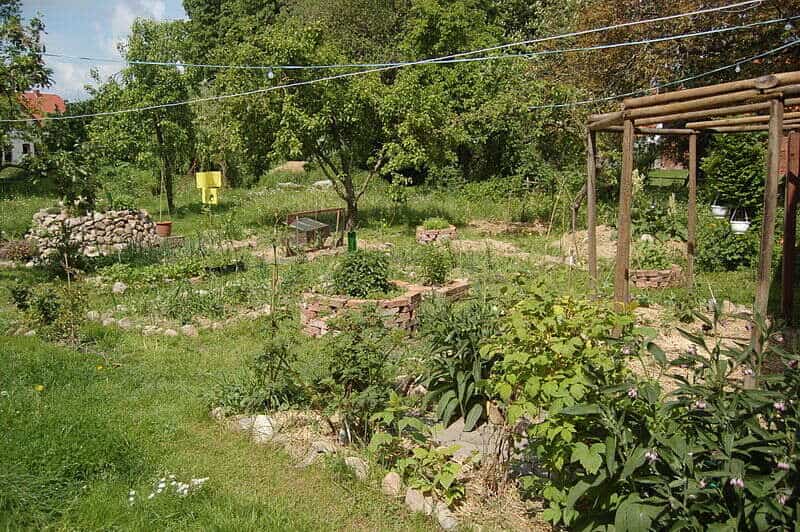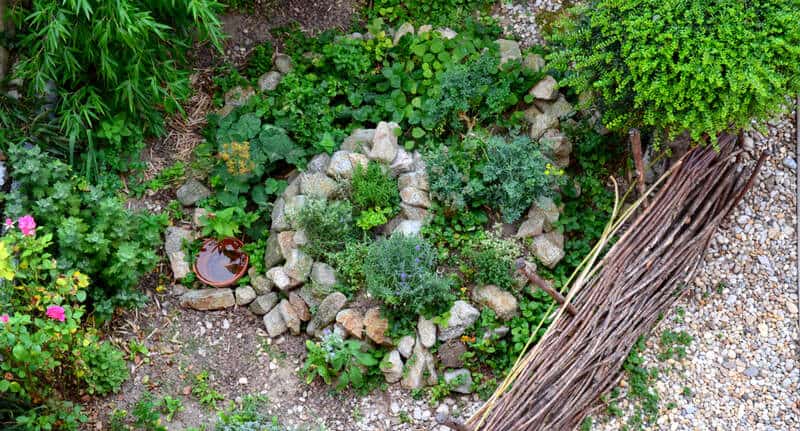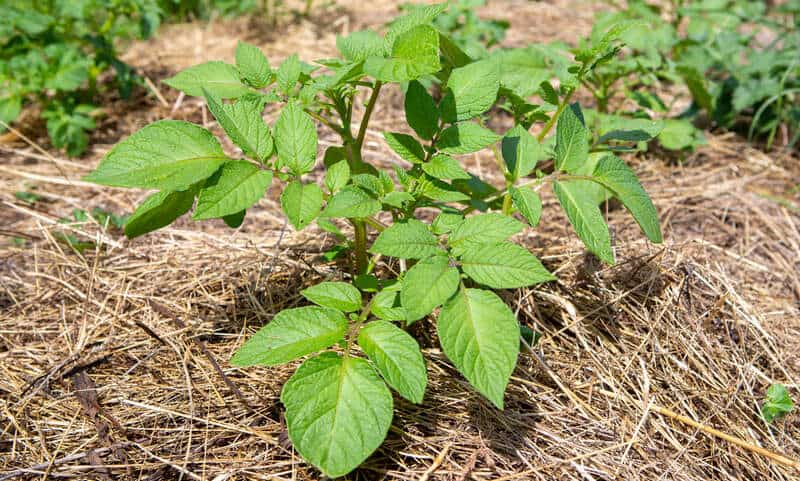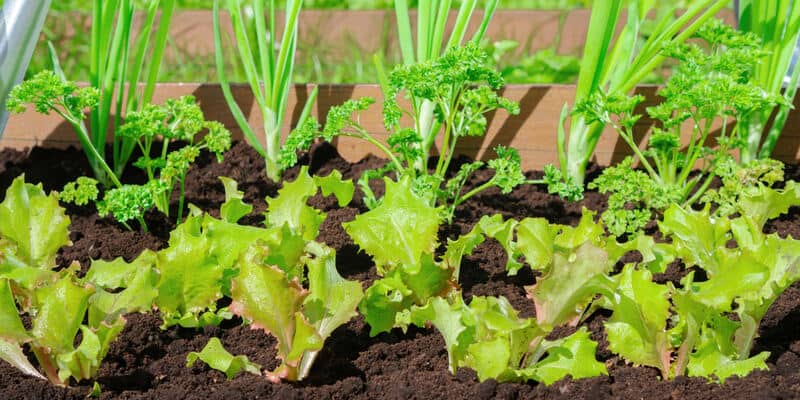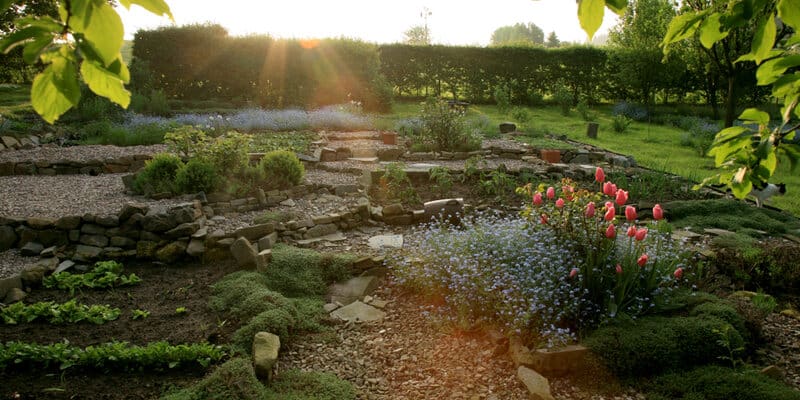If you’ve ever wanted to work close with nature while growing your own edible plants, welcome to permaculture gardening. When you start a permaculture garden, you get to grow your own food while caring for nature at the same time. It involves a holistic approach to gardening, done with the least amount of labour and interference with land.
Permaculture gardening is a way of living sustainably by working with nature to grow your own food. It has three major permaculture principles: care for the Earth, care for its people, and take only your fair share while returning the surplus. Gardeners achieve this by considering the needs of the natural ecosystem and climate while also meeting human necessities.
If you’re just learning how to make a permaculture garden, this may feel overwhelming. Don’t worry, though — with a little understanding of permaculture and its principles, you can start your journey to sustainable living, one plant at a time.
About Permaculture
‘Permaculture’ is a term first coined in 1978 by Australian ecologist David Holmgren and environmental psychology professor Bill Mollison. The word is a portmanteau of ‘permanent agriculture’, and is defined as working with natural forces (wind, sun, rain) to provide everything a garden needs.
In particular, permaculture gardening has a focus on making use of the existing natural ecosystem to create your garden, and building soil quality so you rejuvenate the earth while growing plants. This creates a self-sustaining cycle of regeneration and growth that leads to a garden that thrives on its own, is low maintenance, and provides you with necessities.
Permaculture Principles
While there are three main ethics to permaculture, it also has several guidelines for living and design. Gardeners must abide by the following principles of permaculture:
- Familiarise yourself with your surroundings so you learn about the Earth. Take the time to know what native plants and animals inhabit your region. Observe your garden: where the sunlight hits, where the water runs off, what unique features already exist.
- Use renewable energy sources and produce no waste. This ensures your garden is self-sustaining and does not damage the Earth as it develops. Recycle items as much as possible.
- Harvest your yields at the right time, both tangible products and intangible resources. This helps your garden support itself.
- Self-regulate and open yourself to feedback so you can constantly improve yourself and your garden. Every success is something to celebrate; every failure is something to learn from.
- Integrate your garden with its environment and with yourself, too. You’re working with the conditions available to you, not against them. If any issues come up, use small solutions with local resources.
- Value diversity in both plants and design. Open yourself up to creative choices and gardening innovations, as well as any inevitable changes that come along the way.
Permaculture Gardening Prep
Permaculture garden design
Your permaculture design should adapt to your local environment, not make the environment adapt to you. Consider your local ecosystem and growing conditions, then work off of them.
The first thing you need to decide is how big you want your permaculture garden to be, and whether you want to simply include certain permaculture features or if you want a complete permaculture gardening experience. This will give you a concrete foundation for later decisions regarding plants and sowing.
Remember that with permaculture gardening, you want to replicate natural patterns of growth and harvest. So long as you keep that in mind, you’ll have a good garden to work with. Factors to consider include sunlight requirements, water sources, and existing landscape.
Prepare and protect your soil
One feature of permaculture gardens is keeping the soil intact, in order to preserve nutrients. This is called no-dig gardening, where you do not disturb the ground to plant. Tilling soil disturbs its natural balance, exposing the underlayers to sunlight and destroying nutrients.
Preparing and protecting your permaculture garden soil involves removing any weeds, then sheet mulching your chosen area. Sheet mulching involves making plantable ground by layering organic material (e.g. straw, wood chips, leaves) over grass to build up the soil. By ‘feeding from the top’, your garden beds feed themselves through natural decomposition and gravity.
An alternative to sheet mulching is the use of raised beds, which also allow you to create a permaculture garden without disturbing your soil. Note that your raised beds should be around 15–30cm high. The advantage of using garden beds is that you do not need to step into the soil, leaving it undisturbed and loose for plants.
You’ll need to check the health of your soil beforehand — whether it’s dry or has too few nutrients, whether it retains moisture too little or too much. Prep your permaculture garden area with organic matter to build it up — or get a professional gardening service to help out, and to maintain it afterwards.
Choose your plants
Check your soil type, climate zone, sunlight hours, and weather patterns – and then get to choosing your plants. It’s important to base your decisions on the conditions you have, not adapt your environment to the plants you want. This may limit your options, but is one of the core ethics of permaculture gardening. And who knows, it could open you up to new herbs, fruits, and vegetables you may never have tried otherwise!
Keep it simple
It can feel overwhelming, trying to think of all the relevant details and covering all the bases. But a permaculture garden should benefit you, not stress you out. Break your project down into simpler steps, start with one small area at a time, and be systematic about how you tackle the permaculture design. Don’t try to go too big and do everything at once — a small, thriving garden is better than a big but half-wilted one!
How To Start A Permaculture Garden
Plant considerations
There are several ways to organise your permaculture garden plants, both in terms of physical arrangement and sowing time. As you start your garden, take these methods into consideration so you keep your plants flourishing!
Companion Planting
One way to keep your permaculture garden lush and flourishing is to practice companion planting. You can pair up crops that naturally fertilise soil, ornamentals that attract beneficial insects, and herbs that deter pests. This way, all your plants give each other a helping hand, sustaining your garden with their own efforts.
Plant Stacking
Nature itself stacks plants out in the wild, so take some inspiration from the earth and build in layers! You have grass and ground cover as the bottom layer, then herbaceous plants and shrubs, then taller trees. When you stack permaculture plants, you use space efficiently and produce more. It’ll also help you provide shade and shelter for different plants, and help you keep them healthy.
Plant Rotation
One more way to take inspiration from nature is by planting in succession. As one crop ends its cycle, plant another one in. This ensures you have a consistently productive garden, and can plant with the season! You can also cycle through plants that return specific nutrients to the ground, so that you keep your soil and your garden healthy year-round.
Starting your permaculture garden
Once you’ve taken everything in consideration and feel ready to start permaculture gardening, it’s time to get planting! Autumn is a great time to begin building your permaculture garden, so it slowly establishes itself throughout winter and is ready to reward your efforts in spring.
Here’s how to start a permaculture garden in seven simple steps:
- Learn your garden conditions. Find the best place to start your permaculture garden in the space you already have.
- Choose your plants based on the growing conditions available to you, and what’s in season. Keep companion plants in mind, and all the requirements of each plant.
- Lay out your permaculture garden based on your space and your chosen plants. Make sure your garden gets enough sunlight and water, and won’t disturb the natural environment.
- Feed your soil by sheet mulching ahead of planting. Or if you’re using a raised bed for your permaculture garden, layer organic matter onto the soil and let it feed itself.
- Build your garden up one plant at a time. Start with the tallest plants, so they have time to establish themselves. Group together plants with similar growth needs. Take care not to disturb the ground more than necessary. And of course, don’t be afraid of a little dirt!
- Compost or mulch the soil as needed by laying down the organic matter on top. This helps your garden retain moisture and keep itself healthy as the mulch breaks down, returning nutrients to the earth. Avoid chemical fertilisers as these could damage both the soil and your plants.
- Set up your watering system, such as drip irrigation or other self-watering setups. You can also collect rainwater runoff to recycle onto your gardening!
Once that’s done, step back and let your garden take care of itself. The best part of permaculture gardening is self-sustainability, letting you work with nature while reaping its harvest — just remember to take only what you need, and give back to the plants that provide for you!


